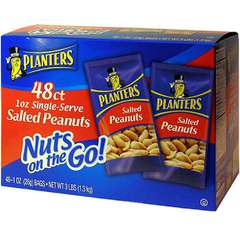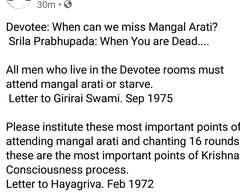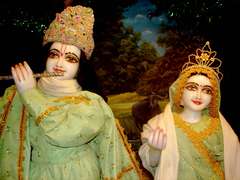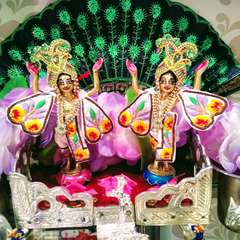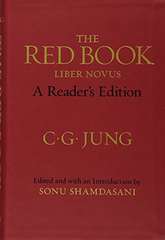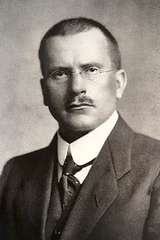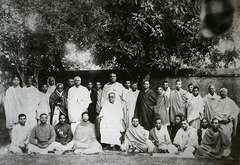Hare Krishna, guru maharaja. Please accept my humble obeisances. All glories to Srila Prabhupada.
Recently, I have been reading about Jung's student years. This section broadly sheds light on the "dreams" aspect in the title "memories, dreams, and reflections." Specifically, Jung discusses his first deep reflection on life after death when his father passed away. Following his father's death, Jung focuses on his quest to determine a profession for himself.
An important thread in the major life events that Jung discussed is his reliance on dreams. After his father's passing, Jung claimed that he saw his father in a few dreams. Within the dreams, Jung's father said that he would return home. As a result of the dream, Jung felt "ashamed" for occupying his father's room and for thinking that his father no longer existed. Yet another time, when in doubt about what he should make his career, Jung dreamed of investigating intriguing creatures and digging in the wild. Through such dreams, it became clear to Jung that he should study science.
Generally, I've seen that individuals take dreams to be some sort of imagination or fantasy. However, it remains interesting to see how Jung took his dreams so seriously, to the extent that he remembered them even in his old age. He believed that they had a direct bearing on his immediate reality in the world. Consequently, he allowed his life to be shaped by them.
When I was reading Jung's book, I was trying to recollect our KC perspective on dreams. I remembered how Srila Prabhupada explained that when one sees gold and mountains in real life, those two elements amalgamate and appear as imaginary golden mountains in dreams. I have also heard from you, guru maharaja, that Krishna, showing mercy to His devotees, helps them burn their Karma by experiencing bad dreams rather than painful situations in real life. Lastly, I also remembered how various devotees mention that dreams regarding Krishna and the spiritual master should not be understood as imaginary and should be considered real.
Thank you so much for patiently tolerating me, guru maharaja. I pray for your mercy and blessings.
your insignificant servant,
Sugopi Radha Devi dasi
HpS - Yes, it is in one purport that Srila Prabhupada comments that sometimes we have inauspicious dreams so that we can pass through certain animalistic, insect, desires without having to take another birth, also, that dreams of Krsna and the Spiritual Master at not ORDINARY.
Other dreams are like experiencing the gross world. Thoughts come according to the laws of psychic nature and cities, trees, parks according to the laws of gross nature.
How do we interpret gross nature.??? Hmmm?
So interpreting dreams may be subject to the same standard.
More!
Next year seminars at the Campus.
